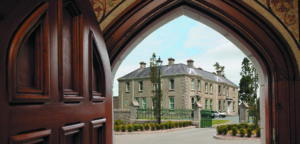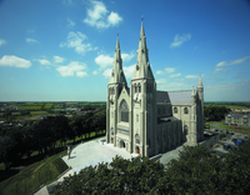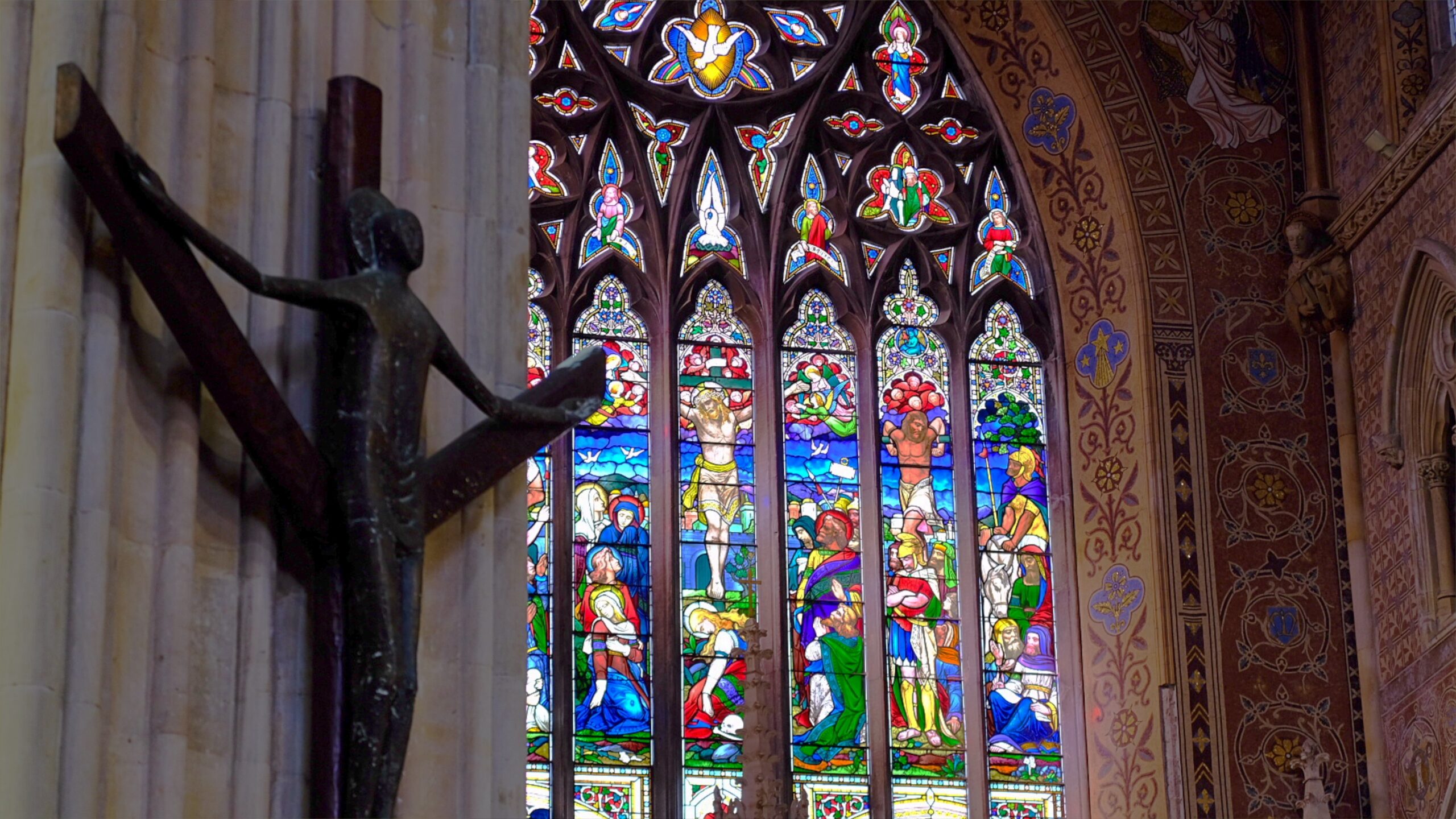An Easter Message from Archbishop Eamon Martin
Earlier this week sculptor, Imogen Stuart, died at the age of 96. Although she was born in Germany she lived and worked most of her life in Ireland, and she has a strong connection with Saint Patrick’s Cathedral here in Armagh.
An Easter Meditation on the Tree of Life
In 1982 at the invitation of Cardinal O’Fiaich, Imogen Stuart made a very distinctive bronze crucifix for the Cathedral sanctuary which she called the Tree of Life.
Unlike the traditional crucifix it shows Christ exalted – his suffering over, he is the Saviour of all, his body surges upwards. His arms not only embrace all humanity but they are raised up to heaven, pointing us to God. If you look closely, you will see that the face of Christ is shrouded, telling of God’s mystery and the mystery of faith as revealed in the incarnation, suffering, death and resurrection of Christ.
Imogen Stuart’s crucifix unites Good Friday with Easter Sunday, suffering and death with joy and new life. It is a vision of Hope. The cross is the Tree of Life.
The story of creation at the very beginning of the Bible tells of the Tree of Life planted in centre of the garden of Eden. Its fruit offers the gift of immortality to the first human beings, Adam and Eve whom God had created, out of love, in his own image and likeness. But after Adam and Eve disobeyed God’s command and ate the fruit of another tree – the tree of knowledge of good and evil – their relationship with God was damaged. Through the serpent’s temptation, sin and evil had entered the garden, bringing envy and hatred, violence and death. Humanity is banished in shame from the Tree of Life and from peace and harmony of Eden.
But the story of the Fall ends with a promise – the hope that one day God would send a Redeemer to win victory over sin and death and reconcile the relationship between earth and heaven. The New Testament therefore speaks of the coming of Jesus the Son of God as a new creation. Jesus is the new Adam. Paradise once lost is now restored through his suffering, death and resurrection. The tree of his death becomes the tree of victory. The cross of Christ is the new Tree of Life.
There’s an ancient legend of Seth, the third son of Adam and Eve, taking a branch from the forbidden tree at Eden and planting it on the hill where his father Adam had been buried. The hill was called Golgotha and the legend tells that many years and generations later, the hard old wood from that tree were would be used to make the wood of the cross.
In the sixth century the composer Venantius Fortunatus mentions that story in the hymn Crux Fidelis, Faithful Cross which is sometimes sung on Good Friday:
Faithful Cross! Above all other,
one and only noble Tree!
None in foliage, none in blossom,
none in fruit thy peers may be;
sweetest wood and sweetest iron!
Sweetest Weight is hung on thee!
Isn’t it beautiful how St John describes that near the place of the crucifixion there was a garden in which there was a new tomb, and they laid the body of Jesus there. So on Easter morning, after the resurrection, the Risen Lord was seen by Mary Magdalene walking in an Easter garden, a new garden of Eden.
Thus, as in the opening pages of the Bible, its final chapter in the Book of Revelation describes a river filled with the water of life flowing from the throne of God, and on either side of the river, the tree of life with fruit and leaves that are healing and life giving, stands the Tree of Life.
I think Imogen Stuart wanted us to look at this crucifix and see there our Saviour Jesus Christ who is the Way, the Truth and the Life, whose body and blood in the Eucharist became our food for Eternal Life. It’s fitting then, that, as well as the crucifix Imogen Stuart was later asked to carve the figures on the altar here in St Patrick’s Cathedral.
+ Archbishop Eamon Martin




You must be logged in to post a comment.